
BMW Z4 Roadster
Generations Timeline, Specs and Pictures
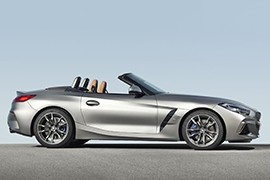
BMW has a long history of making roadsters all the way back to its roots.
This is why it continued to make roadsters for driving pleasure. In 2018, the new generation of the Z4 was launched. Unlike the previous generation, which was available with a retractable hard-top, the new generation is available only as a roadster. Those who want a coupe will have to buy the 2018 Toyota Supra, which is almost identical but it has a fixed top.
Unlike the Supra, the Z4 is available in three engine versions. The Z4 is available with a two liters engine either naturally aspirated or turbocharged, and the top version 3.0-liter turbocharged. The output range is between 197 and 340 hp. For the base model, the sDrive 2.0i, the transmission is a 6-speed manual gearbox. For all the others, an 8-speed Steptronic automatic gearbox is fitted as standard.
Compared to the older version, it is bigger on the outside but has a shorter wheelbase. Now it features a 2.47 meters (97.2”) long distance between the axles, which makes the car more agile in the corners. It also has a 50:50 weight distribution.
From the technology point of view, the Z4 has some interesting features. Apart from the latest digital instrument cluster and infotainment, the Z4 can be opened and locked via smartphone. Using the NFC (Near Field Communication) technology, the smartphone turns into a key. So, if you forgot your keys at home, just be sure you have the phone charged.

The second generation of the Z4 was introduced in 2009 and it was followed by a mid-life cycle impulse (LCI) in 2013.
Along with some aesthetic changes, a new engine was introduced, while the other existing ones were upgraded to Euro 6 pollution norms.
The Z-series of the German car-maker was launched in the mid-’80s with the Z1 roadster. It was followed by the Z3 and the mighty Z8. In 2002, the first generation of the Z4 was launched. The second generation for the Z4 was introduced in 2009, followed by the LCI in 2013. The Z4 E89 was offered with the retractable hard-top and eliminated the coupe version, which was available on its predecessor. After the 2013 model, all engine versions featured turbocharged units.
From the outside, the striking view was at the front, where the headlights were fitted with LED instead of regular light bulbs. The Z4 was offered exclusively with a retractable hard-top, which helped the buyers who didn’t want their canvas top sitting with other parts under the trunk lid.
Inside, the 2013 Z4 received high-gloss black surrounds for the central air vents and the iDrive control system’s folding Control Display, which was offered as part of the optional navigation system. The BMW Z4 sDrive28i, BMW Z4 sDrive35i, and BMW Z4 sDrive35is were offered with Kansas leather trim.
For the 2013 model, BMW added the sDrive18i version, which used the 2.0-liter turbocharged engine. It was offered as standard with a 6-speed manual.
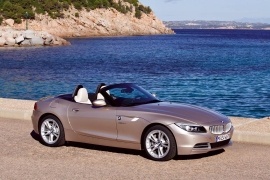
With the first generation launched in 1994, BMW renewed the interest in the 2-seat performance convertibles.
Offering luxury, balance and performance on the premium roadster market, the Z4 was the key to an engaging driving.
For the 3rd generation, BMW combined both a coupe and a convertible into a single model, the Z4.
Several improvements were made to enhance the ride comfort, offering an adaptive M suspension and electronically controlled dampers.
In a range of three 6-cylinder powerplants, the flagship model was BMW Z4 sDrive35i that was equipped with a 3.-liter twi-turbocharged engine. It produced no less than 306 hp and needed around 5.2 seconds to reach 100 kph.
If mated with the 7-speed dual clutch transmission, the Z4 was 0,1 seconds quicker thanks to the ultra quick uphisft and perfectly matched downshifts.
Aesthetically, the Z4 was a combination of a 6-Series Coupe (rear end) and a 3-Series (headlights). The Z4 featured the classic roadster proportions with a long hood, a short deck lid and a low wide stance.
The retractable metal top could be raised or lowered in 20 seconds and the Z4 was the first to come with a two-piece, electro-hydraulically operated hard-top.
For 2009, the overall visibility was greatly improved, with all round visibility up by 14% and side visibility up by 40%.
Although a little bit pricy, the Z4 was well equipped, powerful and fun to drive. Other less expensive options on the market at that time were the Mazda MX-5 and the Nissan 370z.
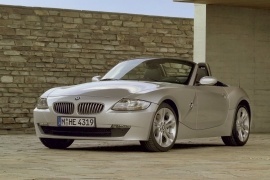
With an exterior look created by a Danish designer, the Z4 was fun to drive and affordable compared to other competitors in its class.
Reaching its 4th generation, the Z4 came with a fresher design that appealed to many of the brand’s fans.
The Z4 kept some of the references of an historical car, such as the large hood and the sloping roof.
Not only the exterior was attractive, as the new engines boasted even more power, reaching 215 hp with the 3.0-liter power plant. The fuel consumption was also reduced compared to the previous generation of the engines.
Available as a 2-seat roadster or a coupe for 2006, the roadster was available with the 3.0i, featuring 17-inch alloys, rain-sensing wipers and heated wiper jets, heated mirrors, power windows and mirrors, keyless entry, vinyl upholstery and a tilt-telescoping steering wheel. The road was equipped with a manually operated soft top and a defroster-equipped glass rear window.
Safety wise, the Z4 came with antilock disc brakes and a stability control system. Also, side airbags, active knee protection and rollover protection were included.
While the Z4 earned a 3-star rating for side-impact, it managed to score 5 stars out of 5 for frontal impact.
The Z4 had a timeless design and sold well over the years.
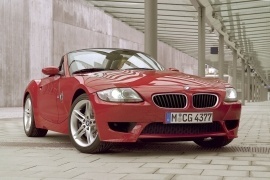
BMW built part of its reputation on roadsters such as the 328, 507 or Z1.
That is one reason why the 2006 Z4 M Roadster was very important in the constructor’s lineup.
The German car-maker decided to launch the whole pack of the Z4 when it was introduced at the Detroit Auto Show in 2006. The new car was available as a coupe or a roadster. It was the last generation of the Z4 that featured the distinct, two bodyworks.
The Z4 M Roadster shared some parts with other Z4 Roadsters, but not all of them. On the outside, there was a different front bumper with larger air intakes to cool the brakes and the engine. On the side, there was a new design for the front fenders. The same went with the rear, where the four exhausts were fitted as standard.
Inside, the new sport-bucket seats ensured its occupants that the car means business and they provided very good lateral support while fast cornering. The instrument cluster featured some M-specific badges.
The most important modifications for the car were underneath. The M-specific engine was a 3.2-liter that offered 330 hp. It was mated to a six-speed manual and an M-differential. Unlike the rest of the range, the M-version featured a hydraulic power steering.
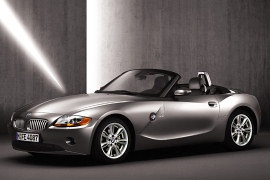
The BMW Z4 arrived in 2002 to replace the BMW Z3 introduced in 1995.
At first, the Z4 was only available as a roadster, however, in 2006, the German producer launched the coupe version.
The Z4’s body dimensions were larger and its wheelbase was longer and wider. The suspension was also upgraded to be stiffer and the car was equipped with a sport package which firmed up the steering. Some of the Z4’s elements were borrowed from the BMW’s 3 series such as the multilink suspension which was more advanced than the one used for the BMW Z3.
The steering no longer used the hydraulic pump and was replaced by an electric servo motor – the steering was controlled based on suspension movement and speed. Some might say that the steering stopped being that precise due to this change.
The Roadster (also called E85) had either a 5-speed manual, 6-speed manual or a 5-speed automatic transmission. The Coupe released in 2006 had a 6-speed manual or a 6-speed automatic, equipped with shift paddles mounted on the steering column.
The BMW Z4 was offered with gasoline engines only, in 7 different cubic capacities and different power. The M version of the Coupe and the Roadster had the engine used for the M3, a 3.2-liter developing 343 hp. The standard featured a 6-speed manual gearbox.























































